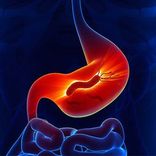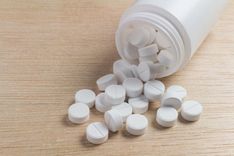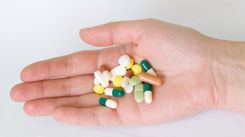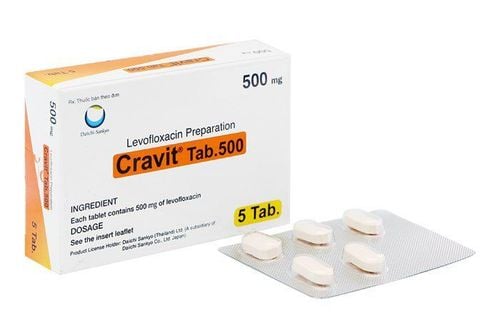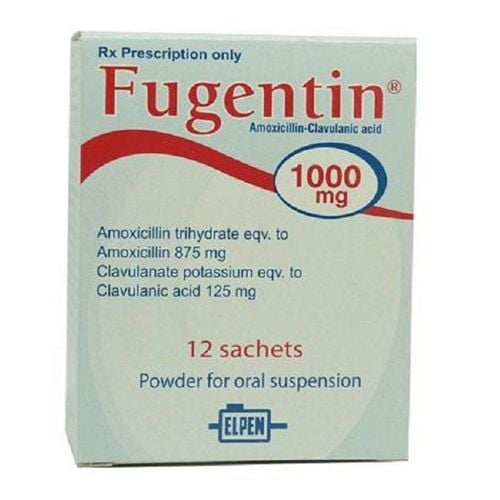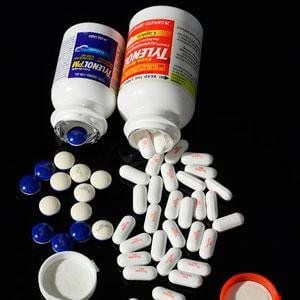Klamentin 875/125 is commonly used to treat certain bacterial infections of the respiratory tract, urinary tract, skin, soft tissues, bones, and joints. Depending on the treatment purpose, the dosage of Klamentin 875/125 is recommended at different levels.
1. What are the uses of Klamentin 875/125?
Klamentin 875/125 contains the main ingredients Amoxicillin (as amoxicillin trihydrate) 875 mg and Clavulanic acid (as potassium clavulanate) 125 mg.
Amoxicillin is a semi-synthetic antibiotic from the beta-lactam group with a broad bactericidal spectrum against various Gram-positive and Gram-negative bacteria by inhibiting bacterial cell wall synthesis. However, Amoxicillin is susceptible to degradation by beta-lactamase enzymes, making it ineffective against bacteria that produce these enzymes.
On the other hand, Clavulanic acid has a beta-lactam structure similar to Penicillin, it can inhibit beta-lactamase enzymes produced by most Gram-negative bacteria and Staphylococcus. Notably, clavulanic acid strongly inhibits plasmid-mediated beta-lactamases, which confer resistance to Penicillins and Cephalosporins.
The combination of clavulanic acid and Amoxicillin in Klamentin 875/125 protects Amoxicillin from destruction by beta-lactamase, as well as effectively extends Amoxicillin's antibacterial spectrum against many common bacteria that are resistant to Amoxicillin, other Penicillins, and even some Cephalosporins.
2. Indications and contraindications of Klamentin 875/125
The antibiotic Klamentin 875/125 is indicated for short-term treatment of:
- Upper and lower respiratory tract infections;
- Urinary tract infections;
- Infections of the skin and soft tissues, bones, and joints.
Klamentin 875/125 is contraindicated in the following cases:
- Hypersensitivity to Penicillins and Cephalosporins;
- Severe liver and kidney impairment;
- History of jaundice or liver dysfunction associated with Penicillin use;
- Infectious mononucleosis.
Precautions should be taken when using Klamentin 875/125 in patients with renal impairment. Prolonged treatment with this medication may result in superinfections.
3. Dosage and usage instructions for Klamentin 875/125
The dosage of Klamentin 875/125 is calculated based on the Amoxicillin component. It is recommended to take the medication just before meals to minimize gastrointestinal intolerance.
For severe infections in adults and children over 12 years of age, use Klamentin 875/125 at a dose of 1 tablet per dose, twice daily.
The treatment duration with Klamentin 875/125 ranges from 5 to 10 days and should not exceed 14 days without a follow-up consultation.
4. Side effects of Klamentin 875/125
Common side effects of Klamentin 875/125 include:
- Diarrhea;
- Vomiting;
- Nausea.
Less common side effects of Klamentin 875/125 include:
- Eosinophilia;
- Hepatitis;
- Cholestatic jaundice;
- Itching, erythema, rash.
Rare side effects of Klamentin 875/125 include:
- Anaphylactic reactions;
- Quincke's edema;
- Thrombocytopenia;
- Leukopenia;
- Hemolytic anemia;
- Pseudomembranous colitis;
- Stevens-Johnson syndrome;
- Interstitial nephritis.
5. Interactions with other medications
- Probenecid when used together with Klamentin 875/125 reduces the renal tubular excretion of amoxicillin, thereby increasing the concentration of amoxicillin in the blood.
- Klamentin 875/125 may prolong bleeding and clotting times.
- Klamentin 875/125 can reduce the effectiveness of oral contraceptives.
In summary, Klamentin 875/125 is an antibiotic used for the short-term treatment of bacterial infections of the respiratory tract, urinary tract, skin, soft tissues, bones, and joints. You should use this medication strictly as prescribed by your doctor to maximize its therapeutic effectiveness and ensure your health.
Please dial HOTLINE for more information or register for an appointment HERE. Download MyVinmec app to make appointments faster and to manage your bookings easily.

